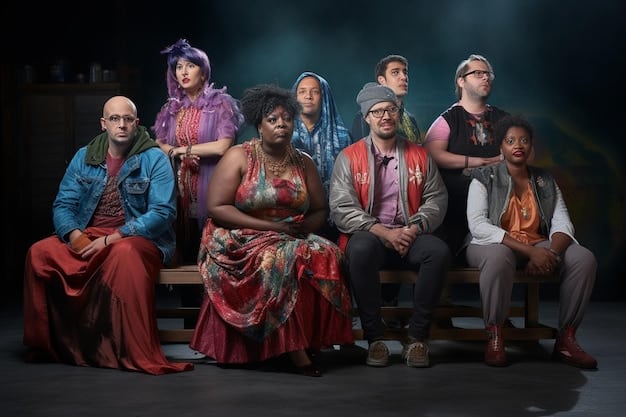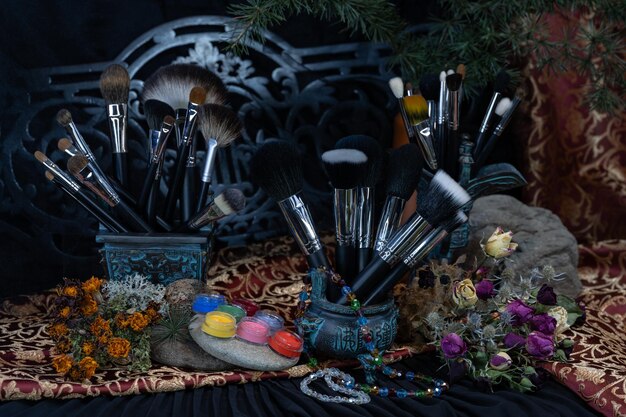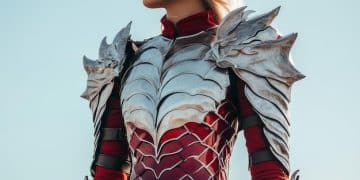Cosplay Tips: Mastering Your Favorite Character’s Look

Cosplay is the art of embodying characters through costumes and performance. Whether you’re a beginner or seasoned pro, refining your skills and techniques will elevate your transformation and bring your favorite characters to life.
Cosplay, short for “costume play,” is a beloved hobby in the geek lifestyle, allowing fans to express their admiration for characters from various media. If you’re looking to refine your cosplay skills and truly master the art of embodying your favorite characters, you’ve come to the right place. Let’s dive into expert tips and techniques that can take your cosplay to the next level!
What is Cosplay and Why is it Popular?
Cosplay is more than just dressing up; it’s an immersive art form that combines costume creation, makeup artistry, and performance. The popularity of cosplay stems from a deep connection fans feel with their favorite characters and the desire to bring them to life.
The Origins of Cosplay
While the modern concept of cosplay is often associated with Japanese anime and manga, its roots can be traced back to science fiction conventions in the United States. Fans would create costumes inspired by characters from their favorite books and movies, setting the stage for what would become a global phenomenon.
Cosplay as a Form of Self-Expression
For many, cosplay is a powerful form of self-expression. It allows individuals to explore different aspects of their personality, connect with like-minded individuals, and celebrate the characters and stories they love. The act of crafting and wearing a costume can be incredibly empowering.
- Community and Connection: Cosplay events and conventions provide a vibrant community where cosplayers can share their creations, exchange tips, and forge lasting friendships.
- Creative Outlet: Cosplay offers a unique blend of creative challenges, from designing and constructing costumes to mastering makeup and performance techniques.
- Recognition and Validation: Sharing your cosplay online or at conventions can bring recognition and validation from fellow fans, boosting confidence and inspiring others.
In conclusion, cosplay’s popularity is rooted in its ability to blend artistic expression, community building, and personal empowerment, making it a rewarding hobby for fans worldwide.
Essential Materials and Tools for Cosplay
Crafting a convincing cosplay requires the right materials and tools. From fabrics and foams to paints and sewing machines, having a well-equipped workspace will make the creation process smoother and more enjoyable.

Fabrics and Their Uses
Selecting the right fabric is crucial for achieving the desired look and feel of your costume. Consider the drape, texture, and durability of different fabrics, and choose those that best match the character’s attire.
Foam for Armor and Props
Foam is a versatile material for creating armor, weapons, and other props. EVA foam is a popular choice due to its lightweight nature, ease of shaping, and ability to be painted and sealed.
- Sewing Machine: A reliable sewing machine is essential for constructing fabric-based components of your costume.
- Cutting Tools: Sharp scissors, rotary cutters, and craft knives are necessary for precise fabric and foam cutting.
- Adhesives: Contact cement, hot glue, and super glue are useful for bonding different materials together.
- Painting Supplies: Acrylic paints, spray paints, and paintbrushes are needed for adding color and details to your creations.
In this section, we covered the essential materials and tools for cosplay. Having these items will lay a strong foundation for bringing your character to life with authenticity and precision.
Mastering Cosplay Makeup Techniques
Makeup plays a vital role in transforming into your chosen character. From contouring and highlighting to creating intricate designs, mastering makeup techniques can significantly enhance your cosplay.
Contouring and Highlighting for Character Accuracy
Contouring and highlighting are essential for sculpting your face to resemble the character’s features. By strategically applying shadows and light, you can enhance your cheekbones, define your jawline, and alter your nose shape.
Creating Special Effects with Makeup
For characters with unique features or special effects, makeup can be used to create realistic illusions. This includes creating scars, wounds, tattoos, and other distinctive marks.
- Foundation and Concealer: Choose a foundation and concealer that match your skin tone and provide a smooth base for your makeup.
- Eyeshadow and Eyeliner: Use eyeshadow and eyeliner to define your eyes and create the desired shape and color.
- Lipstick and Lip Liner: Select a lipstick and lip liner that complement your character’s overall look and enhance your lips.
To summarize, mastering makeup techniques such as contouring, highlighting, and creating special effects is crucial for achieving an accurate and compelling cosplay transformation.
Cosplay Costume Construction Tips
Constructing a cosplay costume can be a complex process, but with careful planning and attention to detail, you can create a stunning and accurate representation of your character. From 패턴 제작 to sewing and fitting, each step is essential.
Pattern Making for Cosplay
Creating accurate patterns is the cornerstone of costume construction. You can use pre-made patterns, draft your own, or modify existing patterns to fit your design.
Sewing and Fitting Techniques
Sewing is a fundamental skill for costume construction. Practice different sewing techniques and learn how to properly fit your costume to your body for a comfortable and flattering fit.
- Start with Simple Projects: Begin with easier cosplay projects to build your skills and confidence.
- Use Reference Images: Refer to detailed reference images of your character to ensure accuracy in your design and construction.
- Take Your Time: Costume construction can be time-consuming, so be patient and allow yourself ample time to complete your project.
In short, careful pattern making, precise sewing, and meticulous fitting are the keys to constructing a flawless cosplay costume that brings your character to life.
Prop and Armor Creation for Cosplay
Props and armor add depth and authenticity to your cosplay. Whether you’re crafting a sword, shield, or full suit of armor, attention to detail and craftsmanship is essential.

Working with Worbla and Other Thermoplastics
Worbla and other thermoplastics are popular materials for creating durable and lightweight props and armor. These materials can be heated and shaped to create intricate designs.
Painting and Weathering Techniques
Painting and weathering techniques can add realism and depth to your props and armor. Use different paint colors, washes, and dry brushing to create the appearance of age, wear, and battle damage.
- Plan Your Project: Before starting, create a detailed plan of your prop or armor, including measurements, materials, and construction methods.
- Use Templates: Templates can help you create accurate and symmetrical shapes for your props and armor.
- Safety First: Always wear safety glasses, gloves, and a respirator when working with power tools and chemicals.
In this section, we discussed the creation of props and armor. By mastering techniques for shaping, painting, and weathering, you can enhance your cosplay with realistic and visually stunning elements.
Presenting Your Cosplay with Confidence
Bringing your cosplay to life involves more than just wearing a costume. It’s about embodying the character’s personality and presenting yourself with confidence and enthusiasm.
Posing and Photography Tips
Learning how to pose like your character can significantly enhance your cosplay photos. Study reference images and practice different poses to capture the character’s essence.
Interacting with Other Cosplayers and Fans
Cosplay events and conventions are great opportunities to interact with other cosplayers and fans. Be approachable, respectful, and enthusiastic when engaging with others.
- Practice Your Character’s Mannerisms: Observe your character’s posture, gestures, and facial expressions, and incorporate them into your performance.
- Engage with the Audience: Interact with fans by answering questions, posing for photos, and sharing your passion for the character.
- Be Respectful: Treat other cosplayers and fans with respect and appreciation, and avoid any behavior that could be offensive or disruptive.
In conclusion, confidence, posing skills, and respectful interaction with others are vital for presenting a compelling and memorable cosplay.
| Key Aspect | Brief Description |
|---|---|
| 🎨 Makeup Techniques | Master contouring, highlighting, and special effects for accurate character representation. |
| 🧵 Costume Construction | Focus on pattern making, precise sewing, and fitting for a flawless costume. |
| ⚔️ Prop & Armor Crafting | Use thermoplastics with painting and weathering techniques for realistic props. |
| 🎭 Confident Presentation | Practice posing, engage with fans, and embody the character’s personality. |
FAQ About Cosplay
▼
Start with a character you love and a costume you feel comfortable making. Simpler costumes are great for beginners, allowing you to focus on fundamental skills before tackling more complex projects. Don’t be afraid to ask for help from experienced cosplayers!
▼
Practice is key! Watch tutorials, experiment with different techniques, and don’t be afraid to try new things. Pay attention to contouring, highlighting, and color matching to accurately capture the character’s features. Document your progress to see how far you’ve come.
▼
Study your character’s iconic poses and practice them in front of a mirror. Pay attention to your posture, facial expressions, and hand placements. Consider the character’s personality and try to embody their attitude in your poses. Use reference images to guide you.
▼
Always carry a cosplay repair kit with essentials like safety pins, glue, needles, and thread. If something breaks, find a quiet place to make the necessary repairs. Don’t be afraid to ask for help; fellow cosplayers are usually willing to lend a hand.
▼
Consider the character’s costume design and the durability you need. Fabrics like cotton and polyester are great for simple costumes, while EVA foam and Worbla are ideal for armor and props. Always research the properties of different materials before making your selection.
Conclusion
Mastering the art of cosplay requires dedication, creativity, and a willingness to learn. By following these expert tips and techniques, you’ll be well on your way to creating stunning and accurate representations of your favorite characters. Embrace the challenge, have fun, and let your passion shine through!





